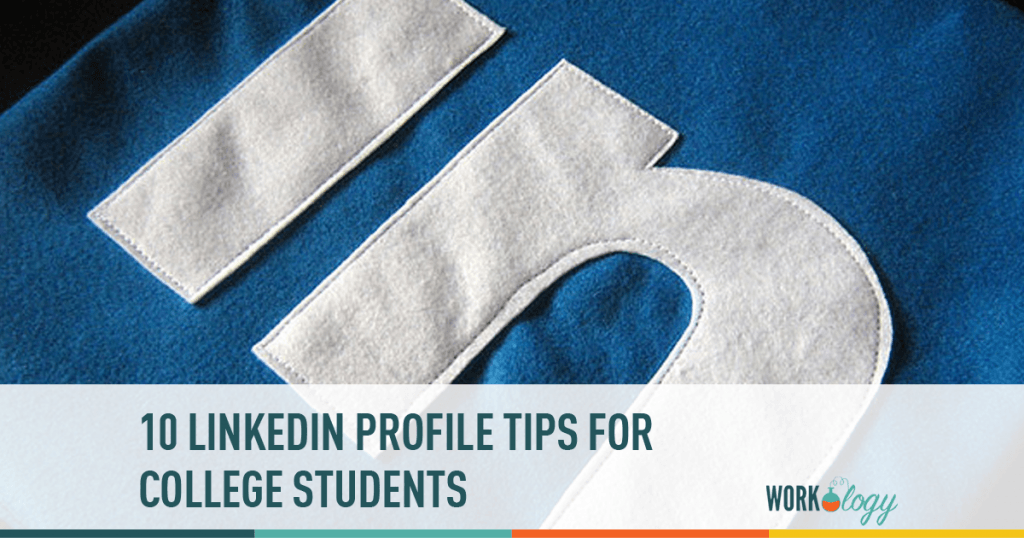College students and new grads are the fastest growing demographic on LinkedIn. It makes sense because students now know that they need to be active on LinkedIn to create an impressive digital presence and to find internships and first jobs which is why I decided to put together a list of LinkedIn Profile Tips
Are you a college student or new grad? You will be able to quickly project a professional digital presence that employers can view and this isn’t like asking someone “hey, write my paper for me.” Create and develop your profile long before you graduate. Keep it updated and use it throughout your college years while you are doing internships.
Think strategically about the keywords and phrases you want to be associated with and make sure they are in your profile so you can found during searches. Here are 10 important areas to focus on with your LinkedIn profile as a college student:
10 tips and areas of focus on your linkedin profile
Photos and Images
Your professional profile photo is essential. It should be a headshot with a nice smile. Some colleges are now offering LinkedIn workshops and photo booths. In addition to a great headshot, consider adding images and videos to your profile. The background cover image is a great opportunity to create the professional image you wish to convey.
Headline
The headline you select should be strategic. You have the opportunity to create a compelling headline that is descriptive and contains relevant keywords. You might have a headline such as “University Junior interested in Accounting Internship” or “Social Media Marketing Intern” or “Recent grad seeking PR position in NYC”. Sometimes viewers to your profile will only see the headline and photo, so take your time to create the best headline for you.
Summary
The LinkedIn summary is an upbeat overview of your experience, capabilities and goals. This should be a succinct paragraph or two. You can use up to 2000 total characters. The summary can be a magic opportunity to tell your story, not just repeat the other sections of your LinkedIn profile. In addition, you may add a list of your specialties at the bottom of your summary section which serve as additional “keywords”. Examples of specialties might be: Accounting, Social media, JAVA, Sales, Blogging, Business Development, Statistical analysis, etc.
Work Experience and Volunteering
Enter in your jobs and internships with title, dates and descriptions. Enter the company name using the drop down to get the company logo on your profile. If you don’t have that type of work experience yet, consider adding your volunteer job experiences in the volunteer section of the LinkedIn profile. Volunteer job experiences are often very valuable so don’t forget to include them.
Education
Indicate your high school and college. If you went to multiple colleges, add them all. You should also add in your activities and any relevant description. Examples that you would include: President or officer of fraternity, sorority or club; sports involvement; arts involvement, and extra curricular leadership roles. Employers like to see that students are engaged with their college or university in meaningful ways. Leadership positions are highly valued.
Personalized URL and Contact Info
LinkedIn lets you personalize your URL so it’s wise to try to snap up your name if you are able to. Proudly include your personal LinkedIn URL on your resume and email signature. Your contact information should also be included in the profile in the upper contact info section and in the “Advice for contacting”.
Skills
Pick the top 10 skills that you have or are in the process of developing. If you have not had a lot of work experience and you aren’t sure, you can still choose meaningful skills. If you are a math major, you can choose “mathematical analysis” as an example. If you are a liberal arts major, you might consider “written and oral presentations” or “communications”. If you are interested and well versed in environmental causes, you can consider “environmental policy”. Pick skills that truly reflect your current skills and those that you are developing. Also think strategically about what you want to be known for.
Courses, Certifications, Patents, Languages, Awards, and Publications
Show your expertise and thought leadership by strategically adding courses, certifications, patents, awards, and publications to your profile. LinkedIn has specific sections in the profile to highlight all of these. You don’t need to list every course, but pick those that your future employer would like to see and possibly not expect to see. For example, you are an English major and you list Statistics and Chemistry on your profile. For publications, add your blog posts and articles with a link to the online version. Any relevant patents, languages, awards, and certifications should be added into your profile in those specific sections.
Organizations, Groups
List the professional organizations you are affiliated with by adding “organizations” to your profile. Some of those may also have their own LinkedIn group. In addition, choose LinkedIn groups that are related to your career aspirations. There are LinkedIn groups for everything from sports marketing to workplace innovation to social media. It’s always wise to choose groups that are connected to your college or university. The groups you chose will be displayed on your profile.
Recommendations
Consider asking an employer for a LinkedIn recommendation. This will set you apart from other college students. You may also ask a professor or internship supervisor who knows you and your work well. Plan to have at least 3 recommendations from people who are enthusiastic about your capabilities.
One final tip is be sure to check your spelling and grammar. Make sure your profile is 100% complete. Keep your keywords up to date as your interests and skills evolve. Have your roommate or close friend do a double check on your profile. Develop the habit of checking and updating your profile regularly as you begin to make valuable professional connections.
What’s your favorite section of the LinkedIn profile?










Comments are closed.